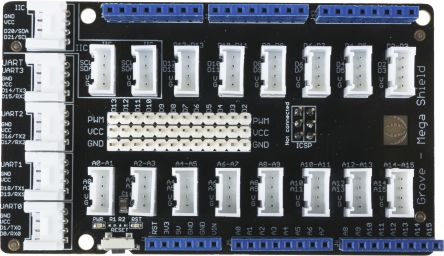
Brand
- Molex 207
- Artemide 105
- Agilent 102
- NEMO 74
- Kennametal 66
- Routledge 62
- Mega Bloks 57
- Capita 45
- RICK OWENS 43
- POLAR 37
- Chronovision 36
- Aritech 32
- Teng 30
- Carl Roth 29
- CRC Press 26
- Nike 26
- Steam 26
- Madness Nutrition 21
- Microsoft 20
- HAY 16
- Lodes 16
- Sigma Aldrich 15
- Ray-Ban 14
- AUTOBAR 13
- iObit 13
- Créme Atelier 12
- Merrell 12
- Rave 12
- MTP Products 11
- SEGA 11
- Benecos 10
- Chapman & Hall 10
- Durable 10
- Rich Piana 5% Nutrition 10
- Activity Superstore 9
- Battle Oats 9
- CAPCOM CO., LTD. 9
- Markberg 9
- TE Connectivity 9
- Team17 9
- Ansell 8
- Hot Wheels 8
- ON 8
- Auerbach Publications 7
- The Big Cheese 7
- Transformers 7
- &tradition 6
- Ceasefire 6
- Crocs 6
- Electronic Arts 6
- Heathrow 6
- Littelfuse 6
- Origins™ 6
- Paradox Interactive 6
- Vmeca 6
- Wickmann 6
- myFirst 6
- Advanced Electronics 5
- Amplivox 5
- Barbie 5
- Burberry 5
- Faction 5
- Lego 5
- SQUARE ENIX 5
- Sony 5
- 2K 4
- Ardell 4
- Balenciaga 4
- Beauty Formulas 4
- Carrier UTC 4
- Collection Cosmetics 4
- Crab Grab 4
- Creatures 4
- Fisher Price 4
- Flexovit 4
- Hein og Haugaard 4
- Kitagawa Chucking 4
- Kronotex 4
- Lily O'Brien's 4
- Mattel 4
- MonsterShop 4
- Nintendo eShop 4
- Play-Doh 4
- Rainbow Designs 4
- SQL 4
- Searchlight Lighting 4
- Slingsby 4
- Sneaky 4
- Splashpanel 4
- Tampax 4
- Technic 4
- AdGuard 3
- And Tradition 3
- Autodesk 3
- Bakugan 3
- CAPCOM 3
- Cosy 3
- Craftiful Fragrance Oils 3
- Diesel 3
- Domus 3
Colour
- Black 130
- Sans 48
- See product description 34
- White 34
- Red 33
- Aluminum 28
- Black and White 24
- Aluminum/ Black 19
- Blue 19
- Polished Aluminum and White 14
Size
Gender
Merchant
- Zoro UK Limited 412
- K4G.COM 243
- RS Components UK 241
- AndLight.co.uk 226
- Routledge 108
- Plusshop UK [OLD] 62
- Glisshop uk 58
- Acorn Fire & Security 43
- Posted Protein 42
- Wrong Weather 42
- Marks & Spencer UK 41
- Designhütte Store 36
- LuisaViaRoma.com 34
- Erysta 33
- uk.plusshop.com 31
- Kick Game 30
- uk.bazta.com 25
- Mskeyify 19
- Craigmore UK 18
- Alensa.co.uk 15
- MyTrendyPhone.co.uk 14
- Gordons Direct 13
- QD Stores 13
- Seal Medical 13
- Onlynaturals 12
- Two Wombats-UK 12
- BPerfect Cosmetics UK 9
- markberg.com 9
- Luisaviaroma Css 6
- 58Surf 4
- BPC Ventilation 4
- Bioethanol-Fireplace.co.uk 4
- Building Plastics Online 4
- Home Done 4
- Lily O'Brien's 4
- Sale Flooring Direct 4
- Slam Jam. 4
- AYRINEST 3
- Craftiful Fragrance Oils 3
- My-Deco-Shop 3
- PerfumeClick 3
- Tosoni Selleria 3
- appstockmarket 3
- ayrinest.com 3
- Ann's Cottage 2
- Care Lineage 2
- Cherry Lane 2
- Click Golf 2
- Golf Gear Direct 2
- Liverpool FC 2



















